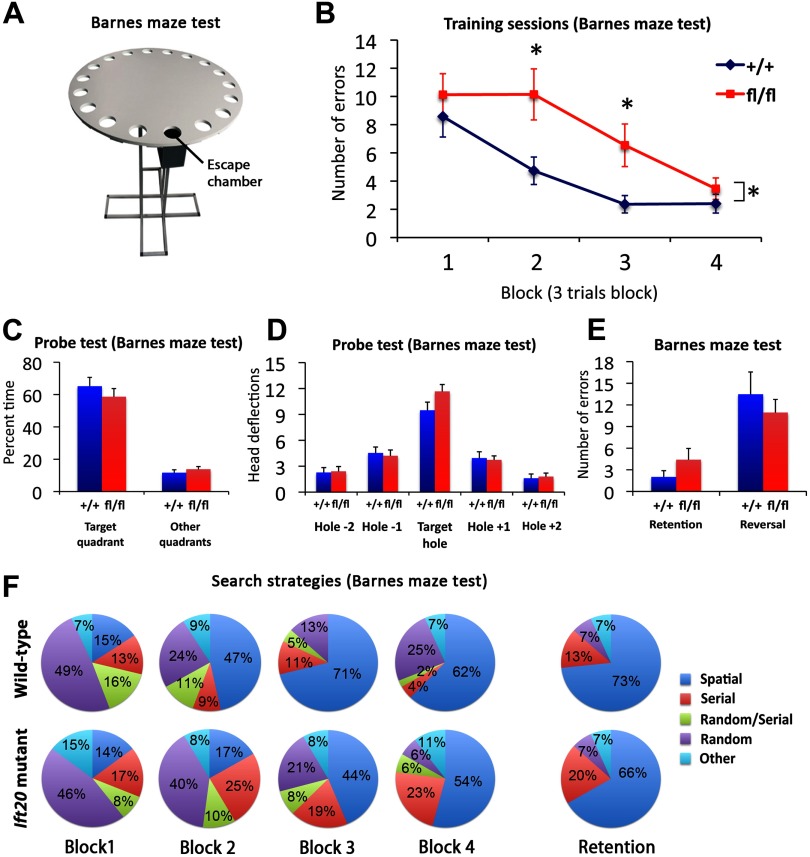Figure 8.
Ift20 mutant mice exhibit delayed spatial learning but preserved long-term memory. A, Schematic representation of Barnes maze test. B, In the Barnes maze, Ift20 mutants showed delayed spatial learning in finding the escape chamber (averaged into 4 blocks of 3 trials) but reached similar levels on task performance in the last block. C, D, Ift20 mutants and wild-type mice spent similar amount of time in the target quadrant (C) and made similar numbers of head deflections at the target hole during the probe test (no escape chamber) of the Barnes maze (D), showing that both groups had learned the original position of the chamber. E, Ift20 mutants showed normal retention and reversal of the task 2 weeks later. F, Ift20 mutants exhibited a delay in using a spatial strategy as evidenced by an increase in use of this strategy at the third block, whereas wild-type mice begin using a spatial strategy at the second block. Two weeks after the last trial (retention test), no differences in the use of spatial strategy were observed between the two genotypes. Shown is the percentage of each search strategies used by Ift20 mutants and wild-type mice across blocks (averaged into 4 blocks of 3 trials) and retention test on the Barnes maze (values represent group means). Search strategies are defined as follows: spatial, reaching the escape tunnel with scores of ≤3 for both error and distance (number of holes between the first hole visited and the escape tunnel); nonspatial, serial, random, random/serial, and other strategies are described in Materials and Methods. N = 31 mice (16 Ift20fl/fl::mGFAP-Cre and 15 wild-type). *p < 0.05. Data are expressed as mean values ± SEM.

